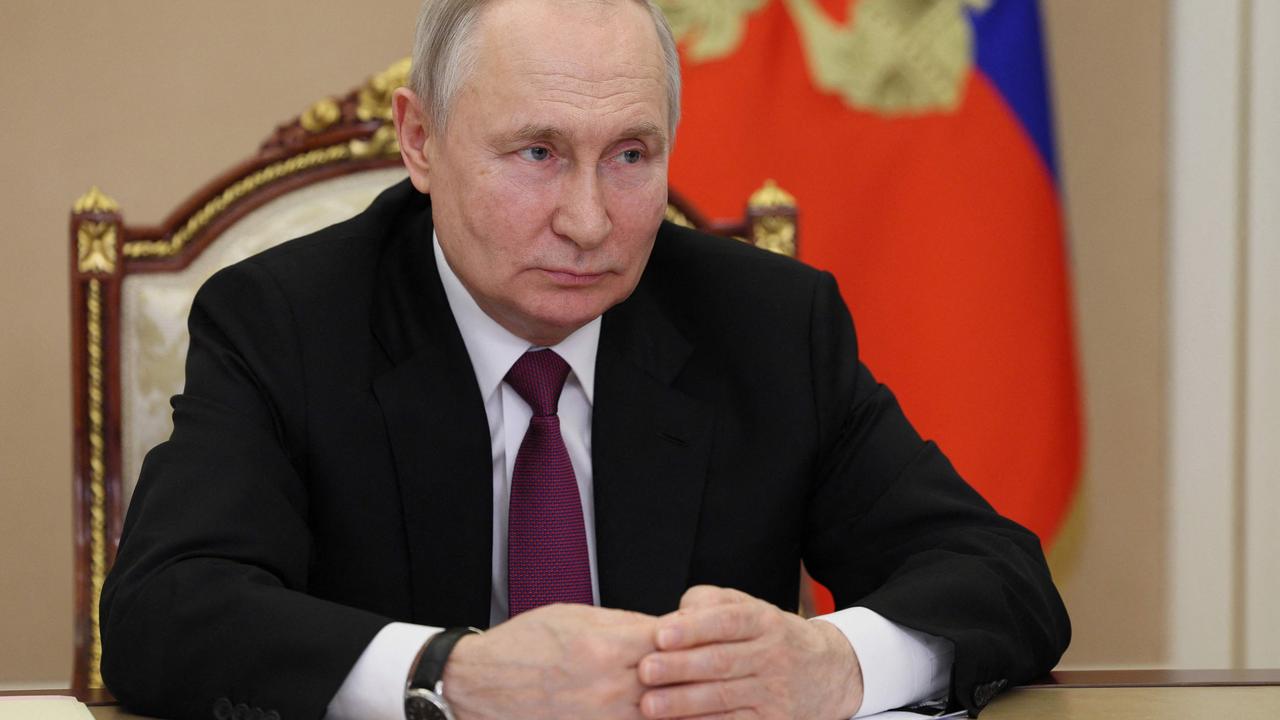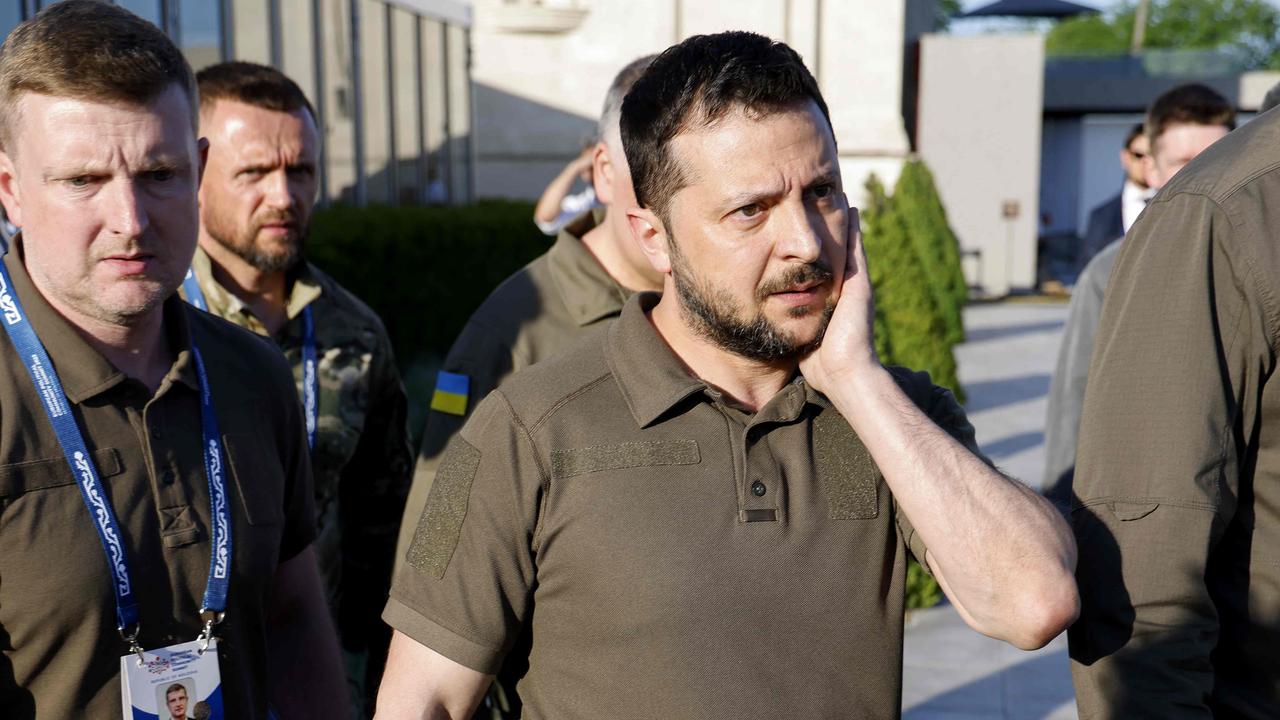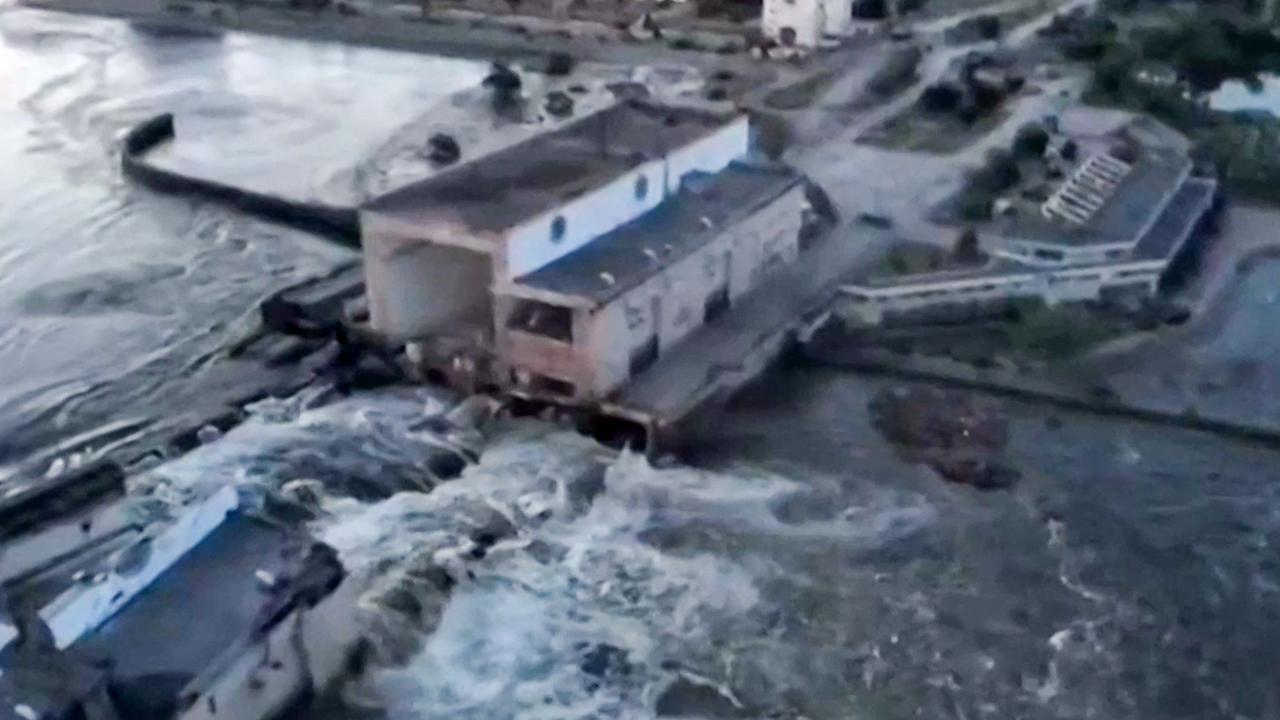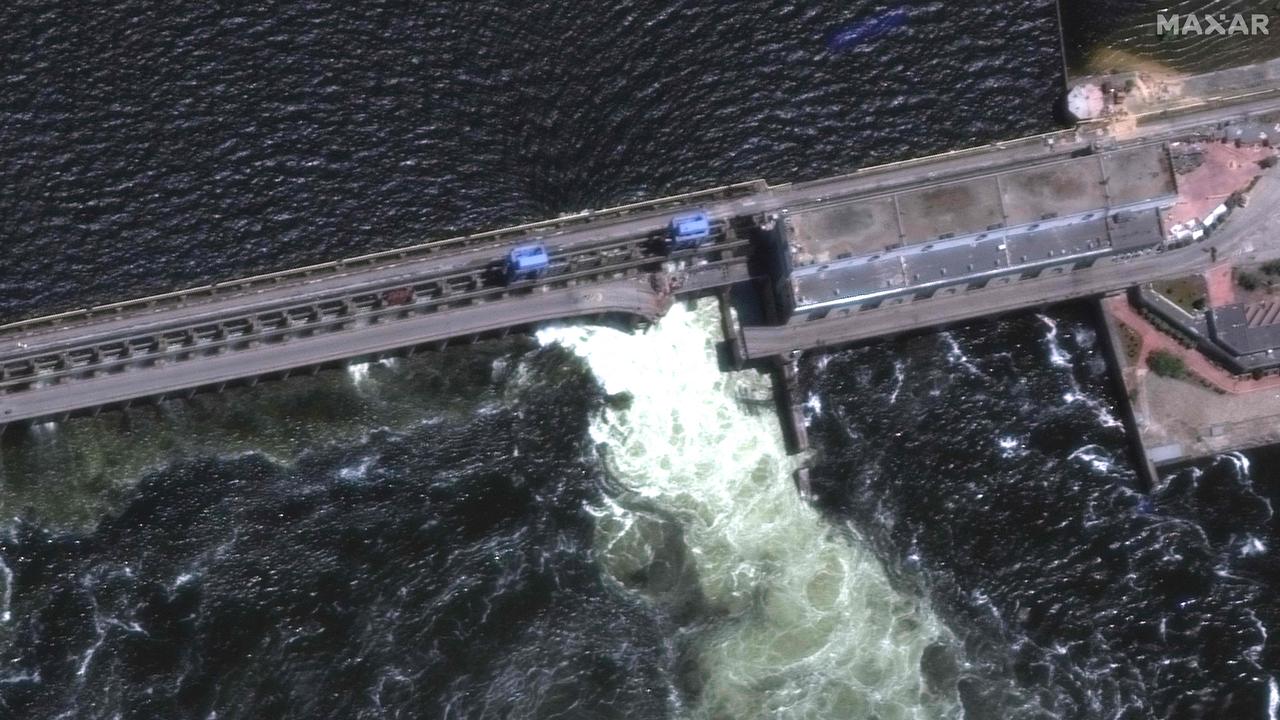‘Severe implications’: Who benefits the most from Ukraine’s destroyed dam?
Thousands have been evacuated after a crucial Ukrainian dam was blown up – but it could be a sign of an even deeper disaster.

On Monday, Ukraine began its long-anticipated counter-attack against invading Russian forces. On Tuesday, a massive blast tore open the massive Nova Kakhovka dam, flooding most of the emerging battlefield. Hours later, Moscow crowed it had crushed Kyiv’s forces.
Coincidence?
News of the environmental and human tragedy exploded upon the world on Tuesday, even as the first reports of Ukraine’s assault began trickling through.
It didn’t take long before Kremlin spokesman Dmitry Peskov pronounced judgment on the dam’s destruction: “We can already unequivocally declare this was deliberate sabotage by the Ukrainian side,” he said.
The motive was to cut water supplies to Russian-occupied Crimea, he added.

Russia’s reclusive defence minister also made an appearance.
“In the past three days, the Ukrainian regime launched a long-promised offensive in different sectors of the front,” Sergei Shoigu read from a prepared statement.
“The attempts at an offensive were thwarted. The enemy was stopped.”
He claimed 3715 Ukrainian soldiers had been killed and 52 tanks and 207 armoured vehicles destroyed. No explanation as to how such precise figures had been determined was offered.
Kyiv has a different story.
#Russia blew up the dams of the #Kakhovka hydroelectric power plant. The purpose is obvious: to create insurmountable obstacles on the way of the advancing #AFU; to intercept the information initiative; to slow down the fair final of the war. On a vast territory, all life will be… pic.twitter.com/rFpkDbjyhj
— Михайло ПодолÑк (@Podolyak_M) June 6, 2023
Presidential advisor Mykhailo Podolya declared: “The purpose is obvious: to create insurmountable obstacles on the way of the advancing (Ukrainian army).
“On a vast territory, all life will be destroyed; many settlements will be ruined; colossal damage will be done to the environment …”
There is as yet no conclusive evidence pointing the finger at either side.
But the destruction being caused by the volume of water equivalent to the size of America’s Great Salt Lake is brutally evident in satellite photos and footage from the ground.

“Despite the competing claims in this instance, the key question is who is likely to benefit most from what could develop into a major disaster far beyond the banks of the Dnipro river?” argues University of Birmingham international security experts, Professor David Hastings Dunn and Professor Stefan Wolff.
Military analysts say it does appear the dam was breached by a massive pre-positioned explosive charge – and not a missile or artillery barrage. And the dam has been under Russian forces’ control for the past year.
“The enormous flood that it has triggered is likely to devastate vast areas on both banks of the Dnipro south towards Crimea,” the professors write.
“This will make offensive operations by Ukrainian ground forces in this area difficult, probably for months to come, and without similarly weakening Russian defensive lines.”
But it also triggered a string of humanitarian, environmental – and even nuclear – crises liable to divert Kyiv’s resources away from the war effort.
Strategic crossing
The Dnipro River divides Ukraine into east and west. It’s formed a natural barrier along its southern portion, with both sides battling to secure a foothold on its opposite shore since the opening hours of the war.
And securing crossing points will have been crucial for Ukraine to push its troops and tanks into Russian-held territory and refuel and resupply these forces once they engage in the fighting.

Now those bridges, pontoons, ferries and river banks will have been washed away.
“The apparent willingness of Russia to target infrastructure in this way can also be read as indication that Russia lacks the ability to thwart the Ukrainian counteroffensive with conventional military forces,” the University of Birmingham professors argue.
“Instead, the Kremlin seems prepared to employ economic and environmental vandalism in an effort to turn the tide in this conflict.”
That extends to risking a nuclear disaster at a plant far larger than Chernobyl.
The Zaporizhzhia nuclear power plant – Europe’s largest – draws its cooling water from the Nova Kakhovka dam supplies.
The UN Atomic Energy Agency says it is monitoring the situation but adds that there is “no immediate nuclear safety risk” of a meltdown.
“The current dam break does not pose immediate danger to the ZNPP, as the cooling water for the power plant is provided from an operational pond in place next to the power plant,” Kadri Simson, the EU energy commissioner, said on Twitter.
But Russia has previously targeted the plant’s auxiliary power supplies that feed its cooling equipment.
And several incidents of unexplained shelling around the plant have raised fears it was being used as a deadly bargaining chip.
Flood of precedents
German Chancellor Olaf Scholz today backed Ukraine, saying the dam’s destruction “fits with the way in which Putin wages this war”.
Ukraine’s civilian infrastructure is a frequent target – especially its electricity generators.
Nova Kakhovka Dam incorporates a 350-megawatt hydro-electric generator facility.
But dams have themselves long been used as a weapon of war.
Russia has used such tactics before. In 1941, President Joseph Stalin ordered a dam on the Dnipro River to be breached ahead of advancing Nazi forces.

And, in May 1943, the Royal Air Force launched the famous “Dambusters” bomber raid against three dams in the Ruhr Valley.
It was a result of the indiscriminate nature of this destruction that, in 1977, a new protocol was detailed under the Geneva Conventions: “Dams, dikes, and nuclear electrical generating stations, shall not be made the object of attack, even where these objects are military objectives, if such attack may cause the release of dangerous forces and consequent severe losses among the civilian population.”
But that hasn’t reduced the strategic appeal of a destroyed dam.
As recently as 2016, Islamic State forces attempted to sabotage the Mosul Dam to divert Western-backed forces away from the front line to address a humanitarian crisis.
But now, the nearly 40,000 people who live downstream of the destroyed dam have had to scramble out of the way of the 18 million cubic meters of onrushing water.
Double-edged sword
The dam’s destruction also has severe implications for Russian-controlled territory.
Defence minister Shoigu insists Ukraine destroyed the dam to enable Kyiv to redeploy defensive units from the area downstream of the dam into offensive operations further north.
But most of the Russian-occupied territory lies to its south.
That’s despite the Kremlin accusing Kyiv of attacking the dam to cut off a vital water source to Russian-occupied Crimea and “distract from its failed offensive”.
However, Crimea’s lack of water may soon become a severe issue for Moscow.
“It crucially depends on the Nova Kakhovka reservoir for drinking water and for irrigation,” the University of Birmingham international political analysts argue.
“Being cut off from such supplies, possibly throughout the summer, will have immediate and longer-term humanitarian and economic impacts, the scale of which is difficult to estimate at this time.”
But Kyiv faces the most immediate impact of the disaster.
Its offensive – which was the focus of intense international political pressure – risks being thrown into chaos. That could cause the loss of support from key US and European backers. This could force Ukraine to accept a ceasefire arrangement that cedes much of its sovereign territory to Moscow.
“Despite the Kremlin’s rhetoric, what this episode suggests is that Russia is less interested in liberating Ukraine from its present leadership than it is in destroying its ability to function as a sovereign nation,” they add.
“The forced deportations, kidnapping of 19,000 children and bombing of civilian areas are all aimed at depopulation and long-term damage.”
Jamie Seidel is a freelance writer | @JamieSeidel






